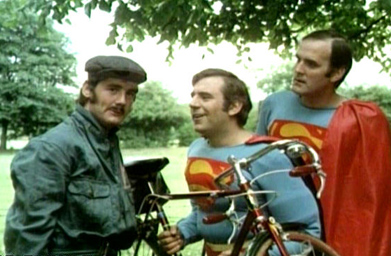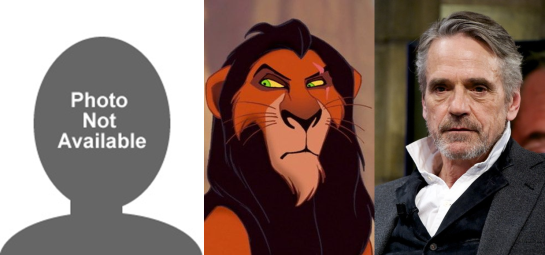
Discovering characters who aren’t THE HERO (thank you, Monty Python)
When you are developing a story, how do you construct your characters?
With the possible exception of the hero, it can be challenging to build characters that populate the universe you have created.
As the universe (and your concept) revolves around the hero, we often start with a very clear idea of what that character is up against and how he or she will respond. But in the myopia of storytelling, the other characters are often fuzzier.
In some cases, we do not know who these characters because we haven’t met them yet. We haven’t gotten to the part of the story in which they enter. They are nebulous possibilities.
Alternatively, until our hero has explored his or her world some and maybe faced a challenge or two, we don’t know what the hero requires in terms of an antagonist, a sidekick, a mentor, a love interest.
What if we create a character only to determine later that he, she or it is ill-suited for our hero?
Then you rewrite that character…or perhaps you don’t, and the character lives with its flaws within your story.
It would be supremely wonderful to have everything completely mapped out in your story before you uttered or typed the first word, but creativity simply doesn’t work that way.
Like life itself, stories evolve as our characters live them, and even the hero may undergo profound change from your first impressions when you formulated your concept.
To my mind, that is actually the exciting part of storytelling. I am just as surprised by what my characters do as my audience is…I just get to see them first.
So, when you are first developing your characters, take the pressure off yourself. You are not going to get it perfect, so don’t try.

Find your placeholder
Cast your mind’s eye
Cast your characters like a film or stage producer and director might cast their projects. Invite characters in to audition and then go with your gut until you know better.
When I wrote my animated screenplay Tank’s, I didn’t have a great handle on the antagonist of the story, so I stole The Lion King’s Scar (Jeremy Irons) until I did. Mentally seeing and hearing Scar whenever my antagonist appeared allowed me to keep writing without worrying about getting it right.
In a few comedy sketches I wrote, I would see and hear Mad TV’s Stephanie Weir (see YouTube clip below). In fact, I worked as though I was writing my sketch for Stephanie. Because I knew that wonderful comedian’s style, I immediately knew how my character would respond to a situation, what words she would use.

The four Kates
If I have a female role I am trying to fill, might I consider the four Kates?
Is the character a Kate Winslet; strongly independent but coming from a place of softness and wonder?
Is she a Kate Capshaw; the hapless victim, eternally floating with the current until pushed too far, who then comes out swinging?
Is she a Cate Blanchett; internal strength incarnate but with an intellectual prowess that cuts a foe down before anyone knows the fight is on?
Is she a Katherine Hepburn; fierce brawler one minute, playful kitten the next?
Choose any one of those four (sorry Katherine Heigl, but I don’t see me writing parts for you) and I never consciously have to consider that character again…the words, actions and reactions are obvious to me.
Isn’t that cheating?
No.
First, all story and character is based on what has come before it. What makes the story unique is the writer, then who ever works on it next (editor, director), and then the audience who takes it in.
When I use Scar, Stephanie Weir or Cate Blanchett as a placeholder and guide, I am interpreting those characters/people through my personal lens.
And ultimately, I am fitting those visions into the story I am developing, demanding different things of them than others have or might. It is simply a starting point.
My antagonist Kang is not Scar, although there are overlaps as there are with pretty much all Disney villains (not implying that Disney is interested in Tank’s…but I am accepting calls).
The point here is to remove or at least temper the roadblocks that stand between you and the completion of your story.
Remain open to the possibilities with your characters and I think you’ll find they will ultimately tell you who they are.
And who knows? Maybe your character will be so wonderful that the three living Kates will vie for the role.
If you’re interested in learning more about story and storytelling, check out:
So, What’s Your Story? (web)
So, What’s Your Story? (Facebook)
Note: Until I assembled this piece with its images, I hadn’t noticed how monochrome my experiences were. I want to leave this post as is, but will give greater thought moving forward.

